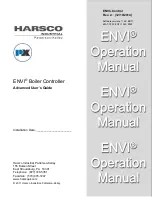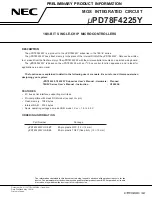DR
AFT
DR
AFT
DRAFT
DR
D
RAFT
DRAFT
DRA
FT DRAF
D
RAFT DRAFT DRAFT DRAFT DRAFT D
DRAFT
D
RAFT DRA
FT DRAFT DRAFT DRAFT DRA
UM10316_0
© NXP B.V. 2008. All rights reserved.
User manual
Rev. 00.06 — 17 December 2008
356 of 571
NXP Semiconductors
UM10316
Chapter 21: LPC29xx CAN 0/1
12. CAN configuration example 1
shows which sections and types of CAN identifiers are used and activated.
The ID look-up table configuration of this example is shown in
.
12.1 Explicit standard-frame format identifier section (11-bit CAN ID)
The start address of the explicit standard frame-format section is defined in the CASFESA
register with a value of 00h. The end of this section is defined in the CASFGSA register.
In the explicit standard frame-format section of the ID look-up table, two CAN identifiers
with their source CAN channels (SCCs) share one 32-bit word. Unused or disabled CAN
identifiers can be marked by setting the message-disable bit.
To provide memory space for eight explicit standard frame-format identifiers, the
CASFGSA register value is set to 10h. The identifier with Index 7 of this section is not
used and is therefore disabled.
Fig 85. Clearing message lost
message
handler
access
ARM
processor
access
01
11
01
11
11
00
1st Object
write
2nd Object
write
1st Object
read
3rd Object
write
write
SEM
write
D2
write
D1
write
ID,
SEM
write
SEM
write
D2
write
D1
write
ID,
SEM
write
SEM
write
D2
write
D1
write
ID,
SEM
read
SEM
read
D2
read
D1
read
SEM
clear
SEM
IntPndx
semaphore
bits
look-up
table
access
MsgLostx
Table 300. Used ID look-up table sections of example 1
ID look-up table section
Usage
FullCAN
Not Activated
Explicit standard frame-format
Activated
Group of standard frame-format
Activated
Explicit extended frame-format
Activated
Group of extended frame-format
Activated


















